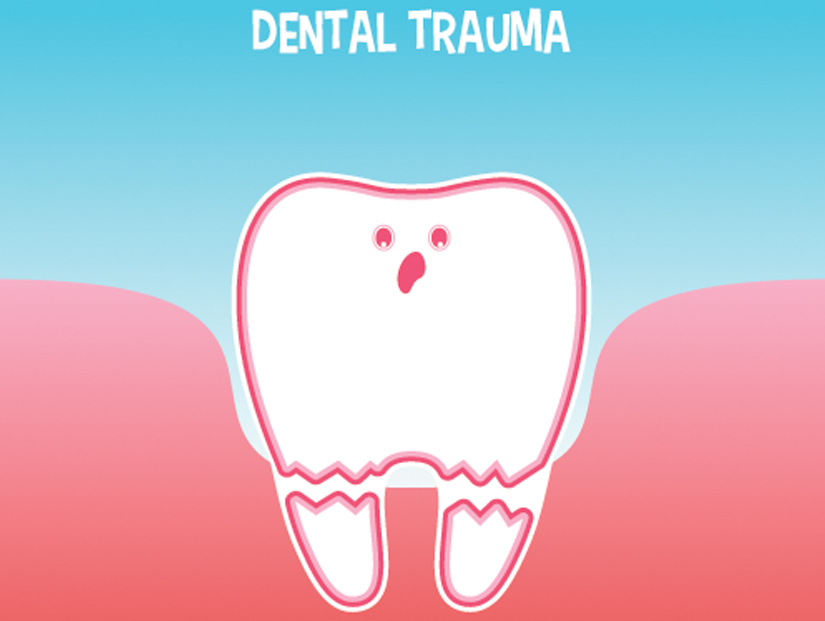
Most children accidentally cause damage to their teeth during playtime. The odds are much higher if a child participates in sports or outdoor activities. Even a tooth that does not appear cracked or chipped after trauma may be injured. If your child’s tooth changes colour or darkens, the tooth is probably damaged. This change of colour is not the same as staining from excessive fluoride, medication, or inadequate hygiene.
Sometimes, the tooth might turn pink or red after trauma. The time that it takes for red or pink discolouration to appear varies depending on the kind of damage. If the colour changes shortly after the injury, it is due to broken blood vessels inside of the dental pulp (the soft tissue inside of every tooth). The tooth may eventually regain its normal colour, or could darken to grey over time.
Another situation is when damaged blood vessels in the tooth sometimes darken the tooth 2 to 3 weeks after an injury. Things like iron carried by the blood can make their way inside of the hard tissue layer of the tooth. As the blood breaks down, the tooth may appear grey, brown, and sometimes black. In many cases, the tooth will regain its normal colour over time, but the crown sometimes keeps the darker tint indefinitely. If the tooth’s colour does not improve over time, it may be dead.
What to do in case a tooth is knocked out?
Knocked out teeth have a high chance of being saved by the dentist and if it is returned to their socket within 1 hour of being knocked out. One should hold the tooth by the crown and try to re-implant it.
You must be careful not to touch the root of the tooth, once placed back into the socket, bite on a clean cloth or gauze to hold the tooth in place and go directly to your dentist. If the tooth cannot be put back into the socket, submerge the tooth in saline, cold milk or the victim’s own saliva and go to the dentist immediately.
It is also important to know, the longer you wait, the less likely it is that the tooth can be re-implanted into the socket. When there is an injury in your mouth make sure you rinse your mouth to remove any blood or particles. To control the swelling, place a cold cloth or cold compress on the cheek near the injury site. If the tooth is fractured, do a warm water rinse and apply a cold pack or compress. The cold pack along with Ibuprofen will help to control the swelling.
Good news is trauma may not always lead to tooth loss, but having the tooth examined by a professional could help prevent complications and pain later. Your dentist will be able to x-ray the damaged tooth to check for infection or swelling under the tooth. Depending on the extent of the damage, the tooth may be left alone to fall out naturally as the permanent one comes in. Infection under the tooth could require treatment or removal of the tooth.
Dr Vijayalakshmi Sundarraj (BDS) is dental surgeon at Wassan Specialty Dental Center